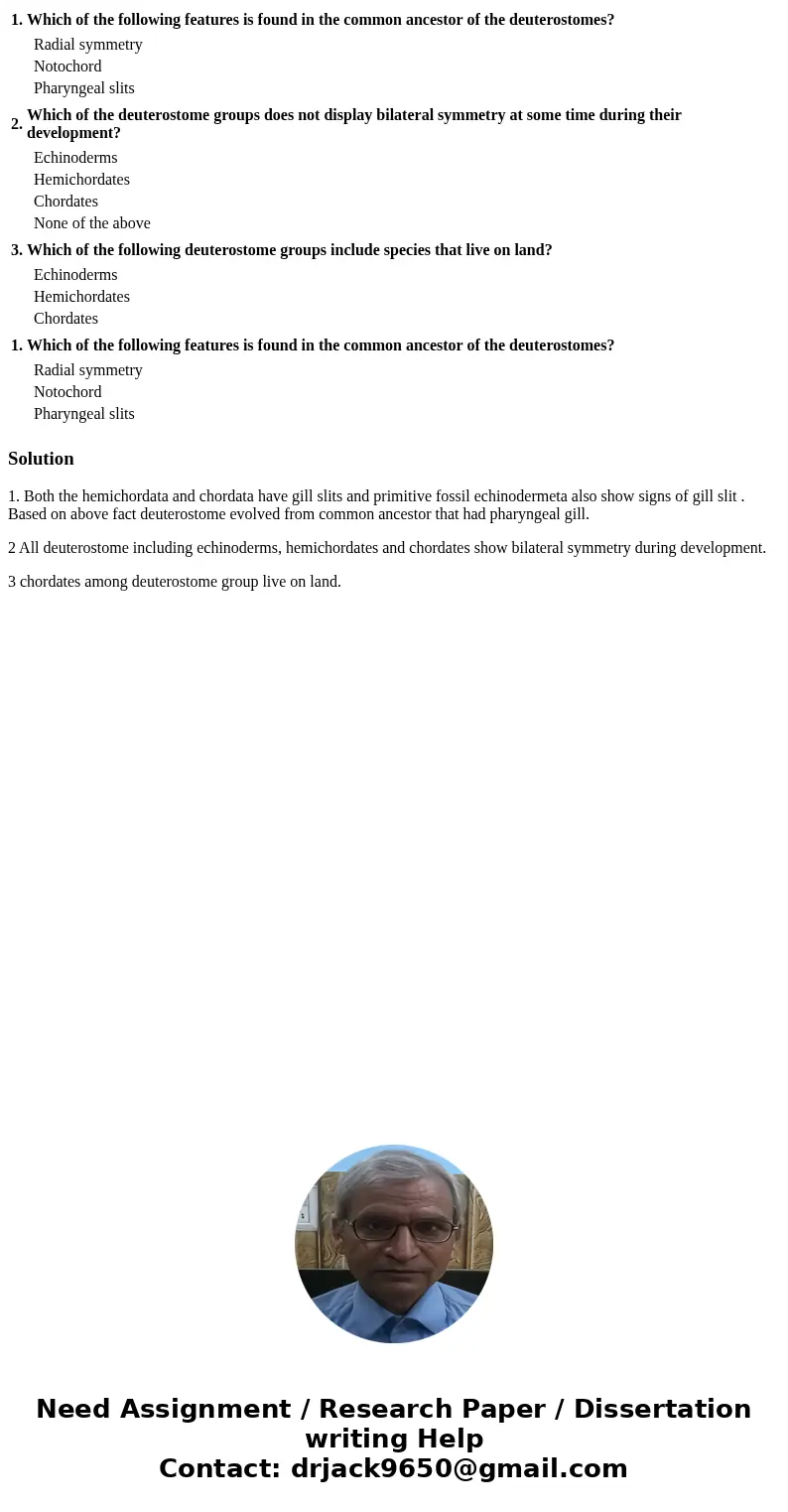| 1. | Which of the following features is found in the common ancestor of the deuterostomes? |
| | Radial symmetry | | Notochord | | Pharyngeal slits | |
| 2. | Which of the deuterostome groups does not display bilateral symmetry at some time during their development? |
| | Echinoderms | | Hemichordates | | Chordates | | None of the above | |
| 3. | Which of the following deuterostome groups include species that live on land? |
| | Echinoderms | | Hemichordates | | Chordates | |
| 1. | Which of the following features is found in the common ancestor of the deuterostomes? |
| | Radial symmetry | | Notochord | | Pharyngeal slits | |
1. Both the hemichordata and chordata have gill slits and primitive fossil echinodermeta also show signs of gill slit . Based on above fact deuterostome evolved from common ancestor that had pharyngeal gill.
2 All deuterostome including echinoderms, hemichordates and chordates show bilateral symmetry during development.
3 chordates among deuterostome group live on land.

 Homework Sourse
Homework Sourse